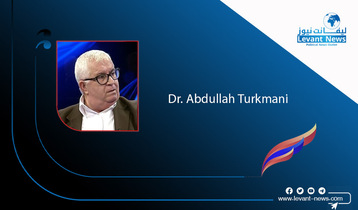-
ISIS and the Day After in Afghanistan

But surprisingly enough, it wasn’t the Taliban that made claim to the attack but the Islamic State (ISIS), a familiar name in Afghanistan, better known by its local affiliate, IS-Khorasan. In the past, the terror group has carried out several attacks across the country, expected to increase, both in sum and precision, once the US withdrawal is complete.
According to intelligence reports, over the past six months several ISIS fighters have fled the al-Hol Camp in eastern Syria and found their way to Afghanistan, where they are preparing for the day after President Joe Biden completes troop withdrawal on the 20th anniversary of the twin attacks on New York City. Defense Secretary Lloyd Austin has said that this was to put a “responsible end” to the Afghanistan war, on its 20th anniversary—something easier said than done.
It might have the opposite effect, however, thrusting the country into the unknown, igniting a new civil war, along with a Taliban comeback and sweeping rise for ISIS. The Russians claim that that US is responsible for the smuggling of ISIS troops from Syria to Afghanistan, nudging them to move their base of operation to new territory, hoping that they can eventually eclipse the Taliban and use Afghanistan as a launching pad against China. The chances of them teaming up with the Taliban are slim, since they share different ideology despite the many common denominators, with ISIS being of the Hanafi school of Islam and Taliban being from the Hanbali one.
Far from welcoming them to Afghanistan, the Taliban fears that ISIS will compete with them in their own fiefdom, winning hearts and minds within the same radicalized Sunni Muslim community that Taliban claims to represent.
According to Human Rights Watch, al-Hol houses 43,000 foreigners connected to ISIS. Their home countries don’t want them back, and some have paid bribe money to get out of al-Hol. ISIS
The Kurds who control the camp have allowed that to happen, although they had originally held on to ISIS prisoners to use them as bargaining chips, whether with the Americans or with the Syrian. They have slowly turned a blind eye to their escape, however, due to the high cost of maintaining security at the camp. Earlier this year the Syrian Democratic Forces (SDF) said that it found weapons and ammunition at al-Hol, as well as laptops, all linked to ISIS.
The US Treasury Department says that al-Hol has become a magnet for ISIS finances, using hawalas (money transfer system) to move an estimated $100 million in cash reserves. Additionally, at least 42 ISIS-style executions have been performed in al-Hol since the start of this year. In March 2021, the SDF said that arrested five cell leaders in al-Hol, along with 53 ISIS suspects. The number of young men that these fighters can recruit and indoctrinate is theoretically unlimited, whether in Afghanistan or beyond.
Western intelligence reports show that ISIS is still recruiting members through online jihadist forums, and still has anywhere between $50-300 million in its treasury. The terror group is using encrypted chat apps to work around bans imposed via Twitter and Facebook, and are now using Tam Tam, a Russian social media network. On that platform they have posted a 216-page illustrated manual for the “novice jihadist fighter,” along with a downloadable instruction video on how to make a one-shot gun for close range assassinations.
Mobilization of the militias
Meanwhile ISIS prepares for the Day After in Afghanistan, so are former warlords of the war-torn country. One of them is Ismail Khan who staged a huge rally of his supporters in the western city of Herat on 18 April. Khan is an ethnic Tajik who claimed hundreds of “armed mujahedin” had been deployed in all districts of Herat Province, of which Herat city is the capital, to fight Taliban in its countryside.
Khan is a former commander in the Western-backed mujahideen group which had been set up to first fight the Soviets in Afghanistan, and then, the Taliban. He has even fired a threat at the Ghani government, describing it as “incompetent” and saying that he would retaliate if Ghani tried to disarm the “mujahideen” using the historic term used to describe the non-state militias. He is one of the many warlords that ISIS is preparing to work with as of next September.
On 13 April, another militant named Zulfiqar Omid announced the creation of a “resistance front” in the province of Daikundi, central Afghanistan, headed by mujahideen commander, Mohammad Ali Sadaqat. Omid posted a photo of himself walking through a column of militiamen, carrying a Kalashnikov. He is a member of the Shiite Hazara minority. Those manifestations of lawlessness prompted Parliament Speaker Mir Rahman Rahmani to comment, very correctly, that the country was on the verge of a civil war.
If militia rule returns to Afghanistan, the state can always arm its own militias, using them to support the 300,000-strong army and security services. Many former militiamen are already part of the 18,000-strong Afghan Local Police (ALP), currently on government payroll, which was set up by the Americans ten years ago. Their funding came to an end in September 2020 and they can quickly be regrouped to help the Afghanistan government after 9-11. There are reports that the Afghanistan government has already started distributed arms to its supporters, in anticipation of the Day After.
But that would have long term consequences for the Ghani government, which took great pride in helping curb militia rule. Yet this is what happened to the Americans when the first came to Afghanistan in 2011. They disarmed and demobilized the militias, only to realize that they needed them on the battlefield, calling them back into service, and arming them, via the ALP.
The hard fact is that Afghanistan is indeed on the verge of a total collapse, and this is music to the ears of ISIS. It was lawlessness and the abundance of arms that allowed them to thrive, first in Iraq and then in Syria, and Afghanistan 2021 looks pretty much the same as these two Arab countries were in 2011-2014.
levant
by: Sami Moubayed

You May Also Like
Popular Posts
Caricature
BENEFIT Sponsors BuildHer...
- April 23, 2025
BENEFIT, the Kingdom’s innovator and leading company in Fintech and electronic financial transactions service, has sponsored the BuildHer CityHack 2025 Hackathon, a two-day event spearheaded by the College of Engineering and Technology at the Royal University for Women (RUW).
Aimed at secondary school students, the event brought together a distinguished group of academic professionals and technology experts to mentor and inspire young participants.
More than 100 high school students from across the Kingdom of Bahrain took part in the hackathon, which featured an intensive programme of training workshops and hands-on sessions. These activities were tailored to enhance participants’ critical thinking, collaborative problem-solving, and team-building capabilities, while also encouraging the development of practical and sustainable solutions to contemporary challenges using modern technological tools.
BENEFIT’s Chief Executive Mr. Abdulwahed AlJanahi, commented: “Our support for this educational hackathon reflects our long-term strategic vision to nurture the talents of emerging national youth and empower the next generation of accomplished female leaders in technology. By fostering creativity and innovation, we aim to contribute meaningfully to Bahrain’s comprehensive development goals and align with the aspirations outlined in the Kingdom’s Vision 2030—an ambition in which BENEFIT plays a central role.”
Professor Riyadh Yousif Hamzah, President of the Royal University for Women, commented: “This initiative reflects our commitment to advancing women in STEM fields. We're cultivating a generation of creative, solution-driven female leaders who will drive national development. Our partnership with BENEFIT exemplifies the powerful synergy between academia and private sector in supporting educational innovation.”
Hanan Abdulla Hasan, Senior Manager, PR & Communication at BENEFIT, said: “We are honoured to collaborate with RUW in supporting this remarkable technology-focused event. It highlights our commitment to social responsibility, and our ongoing efforts to enhance the digital and innovation capabilities of young Bahraini women and foster their ability to harness technological tools in the service of a smarter, more sustainable future.”
For his part, Dr. Humam ElAgha, Acting Dean of the College of Engineering and Technology at the University, said: “BuildHer CityHack 2025 embodies our hands-on approach to education. By tackling real-world problems through creative thinking and sustainable solutions, we're preparing women to thrive in the knowledge economy – a cornerstone of the University's vision.”
opinion
Report
ads
Newsletter
Subscribe to our mailing list to get the new updates!




















